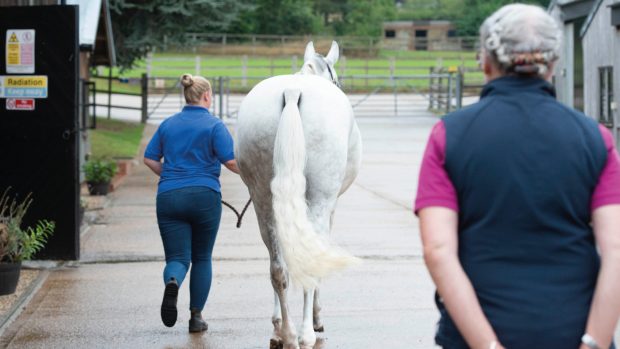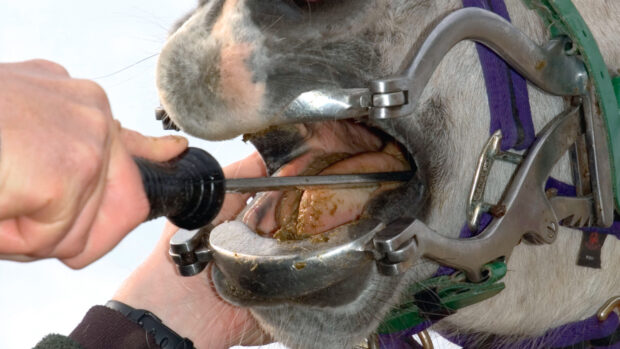Most horse owners will be familiar with the flexion test. It involves bending all the joints in a horse’s leg, holding the leg fixed in this flexed position for a period of time and then trotting the horse away.
The idea is that any trouble brewing in the joints, while not causing lameness during an ordinary trot-up, will be revealed by the flexion test. For this reason it is often part of the pre-purchase (vetting) examination on horses for sale.
But there is no real agreement about how long the limb should be held up, nor about whether it is the action of forcibly bending the leg, or of holding it bent, that reveals the lameness.
Vets in Kansas tried to shed some light on this. They devised a method of scoring the response to flexion tests using video footage of a horse trotting away from the camera.
They filmed the flexion tests performed on 34 horses presented for lameness investigation. For each horse, they carried out the flexion test for a 60-second hold-up time and for a five-second hold-up time.
The horses were randomly assigned to two groups: those in which the five-second test was performed first and those which had the full 60-second test first.
The assessments were made by experienced vets, but they did not know how long the leg had been elevated before the horse trotted away.
When the results were analysed, it was clear that two factors were significantly affecting the response to the flexion tests.
First, the 60-second test resulted in more positive responses than the five-second test, showing that it is not simply the bending of the leg that elicits the response, but the time which is an important factor.
Second, irrespective of the duration of the test, the responses were reduced on the second test compared with the first. In other words, the response to a flexion test is likely to reduce if it is repeated. This is important in lameness examinations when such tests may be used repeatedly on the same horse.
This veterinary article was first published in 16 August 2012 issue of H&H




